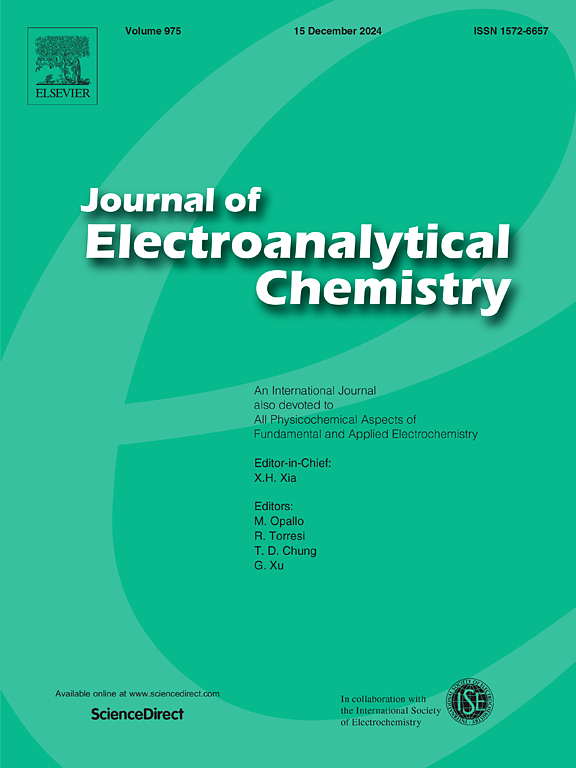A novel 3D framework loaded with MnO2 for high-performance aqueous zinc-ion battery cathode
IF 4.1
3区 化学
Q1 CHEMISTRY, ANALYTICAL
引用次数: 0
Abstract
The rising need for energy storage solutions has generated substantial interest in the exploration of advanced battery technologies. Due to their environmental sustainability and affordability, aqueous zinc-ion batteries (AZIBs) have attracted significant attention. This research presents a MnO2@rGO@HCS cathode material featuring a distinctive ordered 3D hierarchical framework synthesized by the hydrothermal method. The non-template in-situ grown hollow carbon spheres (HCS) on reduced graphene oxide (rGO) create a comprehensive ordered network of channels that can serve as “highways” for electrolyte transport. MnO2 nanoparticles are then uniformly deposited within this framework, forming numerous “service stations” that provide ample ion storage sites along the transport pathways. This architecture not only accelerates ion transport but also significantly improves ion storage capacity. Electrochemical tests reveal that the MnO2@rGO@HCS cathode achieves exceptional performance with a specific capacity of 405 mA h·g−1 at 0.2 A·g−1 current density. This study offers a new approach for constructing a 3D ordered microstructure supported by HCS to efficiently load active materials as high-performance cathodes for AZIBs.
求助全文
约1分钟内获得全文
求助全文
来源期刊
CiteScore
7.80
自引率
6.70%
发文量
912
审稿时长
2.4 months
期刊介绍:
The Journal of Electroanalytical Chemistry is the foremost international journal devoted to the interdisciplinary subject of electrochemistry in all its aspects, theoretical as well as applied.
Electrochemistry is a wide ranging area that is in a state of continuous evolution. Rather than compiling a long list of topics covered by the Journal, the editors would like to draw particular attention to the key issues of novelty, topicality and quality. Papers should present new and interesting electrochemical science in a way that is accessible to the reader. The presentation and discussion should be at a level that is consistent with the international status of the Journal. Reports describing the application of well-established techniques to problems that are essentially technical will not be accepted. Similarly, papers that report observations but fail to provide adequate interpretation will be rejected by the Editors. Papers dealing with technical electrochemistry should be submitted to other specialist journals unless the authors can show that their work provides substantially new insights into electrochemical processes.

 求助内容:
求助内容: 应助结果提醒方式:
应助结果提醒方式:


